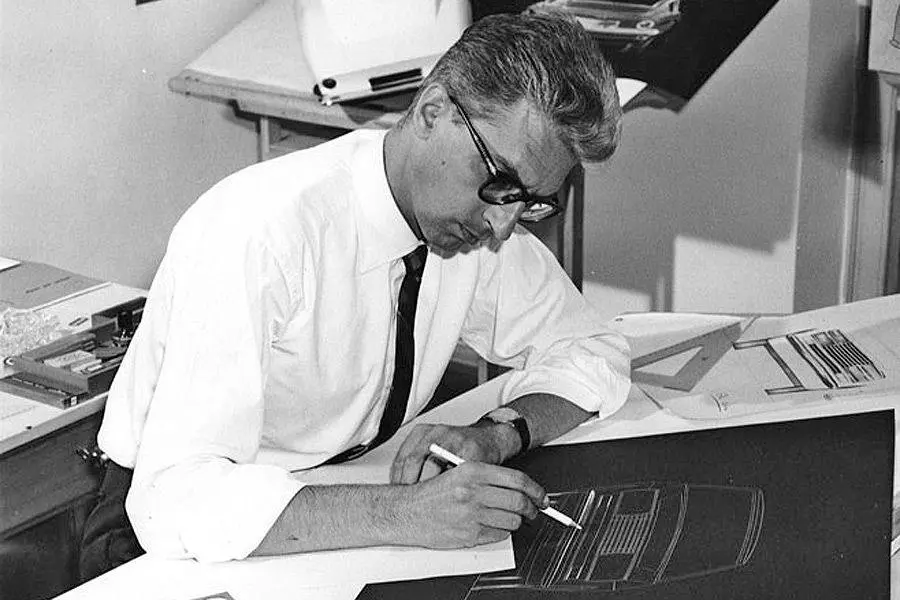
The early years
Designer Sergio Sartorelli was born in Alessandria in 1928; he took the degree in Mechanical Engineering at the “Politecnico” of Turin and soon became interested in cars. He developed a passion and interest for everything that moved on wheels, including cars, trucks, trains, and even military vehicles. The dark periods of the 40s led him to draw vehicles on school books. He also builds wooden models in scale by copying the shapes from war magazines of that time.
With his engineering studies at the Politecnico of Turin, his design skills began to improve from a technical point of view, and his drawings became more and more realistic. In 1954, he graduated in Mechanical Engineering and completed the Military Service in Turin as a cartographer at the North West High Command.
In an 18 months period, he managed to carve out some time. In a small room, he develops car sketches which he presents to the Boano Coachbuilder, obtaining the task of developing others based on drawing. In the same period, he developed some advertising truck proposals for the Pasino coachbuilder in Alessandria. After the military service in April 1956 and getting a negative response from the Boano Coachbuilder and Pinin Farina, Sergio tried his luck at Ghia–Monviso. Ghia, looking for a larger production plan, bought Monviso in 1954. Designer Sergio Sartorelli presented his handmade photos and sketches and was immediately hired by Eng. Segre and by the CEO Mr. Casalis.
His activity at Ghia
Designer Sergio Sartorelli ‘s activity in Ghia began in 1957 under the guidance of Eng. Savonuzzi. He started the apprenticeship with airbrush sketches; he designed a proposal for Volkswagen 1200 Beetle prototype, Coupé, Spider, and Giardinetta based on the Fiat 1100 TV chassis, which were unveiled at the 1957 Turin Motor Show among the beach version called Jolly based on the Fiat 500, 600 (both produced in small series) and the one-off 1100. At the end of 1957, when Eng. Savonuzzi left Ghia for Chrysler, and Sergio became “Head of the Prototype Department.”
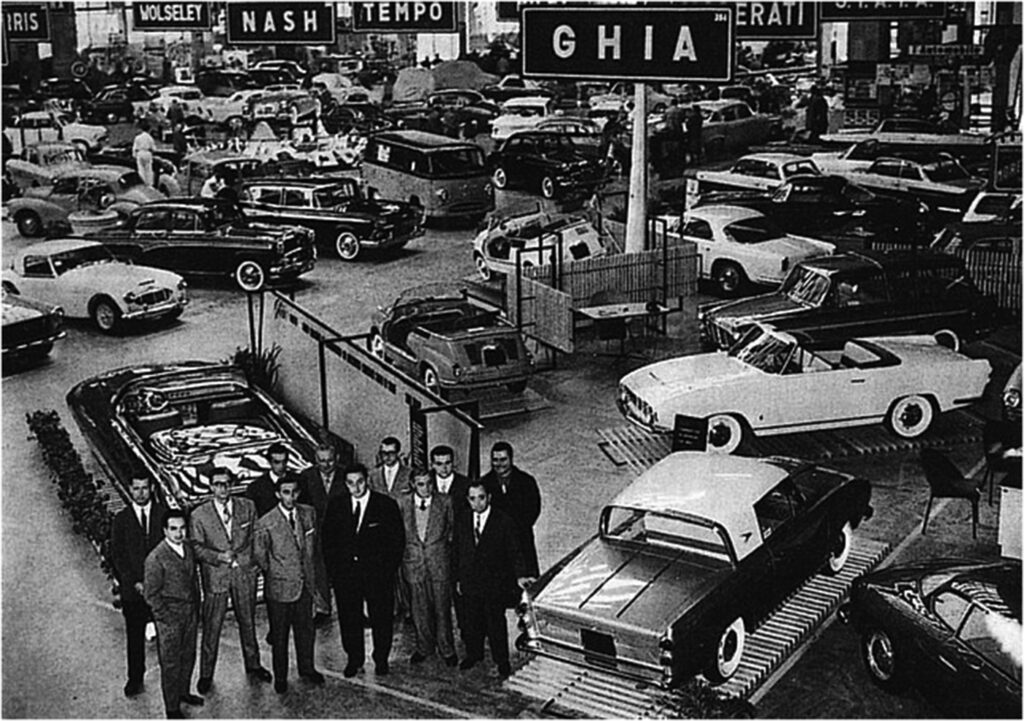
One of his first projects was the Chrysler 375 unveiled with the brand Dual-Ghia, followed by several prototypes, including the Ghia Selene designed in collaboration with Tom Tjaarda, the restyling of the Karmann Ghia, and the mysterious Warzawa, built as sedan and wagon. At the turn of those years, radical transformations took place regarding the headquarters of Ghia. The old Ghia-Monviso headquarters was no longer sufficient, so a new headquarters was built in 1958 in Via Agostino da Montefeltro, much larger and more modern. Finally, in 1959, a new factory began in front of the new Ghia headquarters to renovate an old ammunition factory.
Officine Stampaggi Industriali
So the new Ghia-Osi company (Officine Stampaggi Industriali) was born on the initiative of Eng. Segre and Avv. Arrigo Olivetti, owner of FERGAT. The initiative of Eng. Segre was courageous and far-sighted: to equip Ghia with a parallel structure, capable of producing small special series for the large car industry, but without renouncing to maintain its research and design atelier and it should keep separate the two departments. The following years were marked by high productivity by Carrozzeria Ghia, Sergio Sartorelli designed several models, from the less known prototypes of the Alfa Romeo Giulietta Sprint to a special hunting car based on the Chrysler 30 M for the King of Kuwait and the more famous one-off and production models such as the Fiat 2300 S Coupé, Cabriolet, and Wagon version and the Maserati 5000 GT made for Innocenti. Sartorelli’s adventure as a Ghia employee ended in 1963 with the Ford Falcon Clan prototype and the Chrysler Imperial Crown restyling.
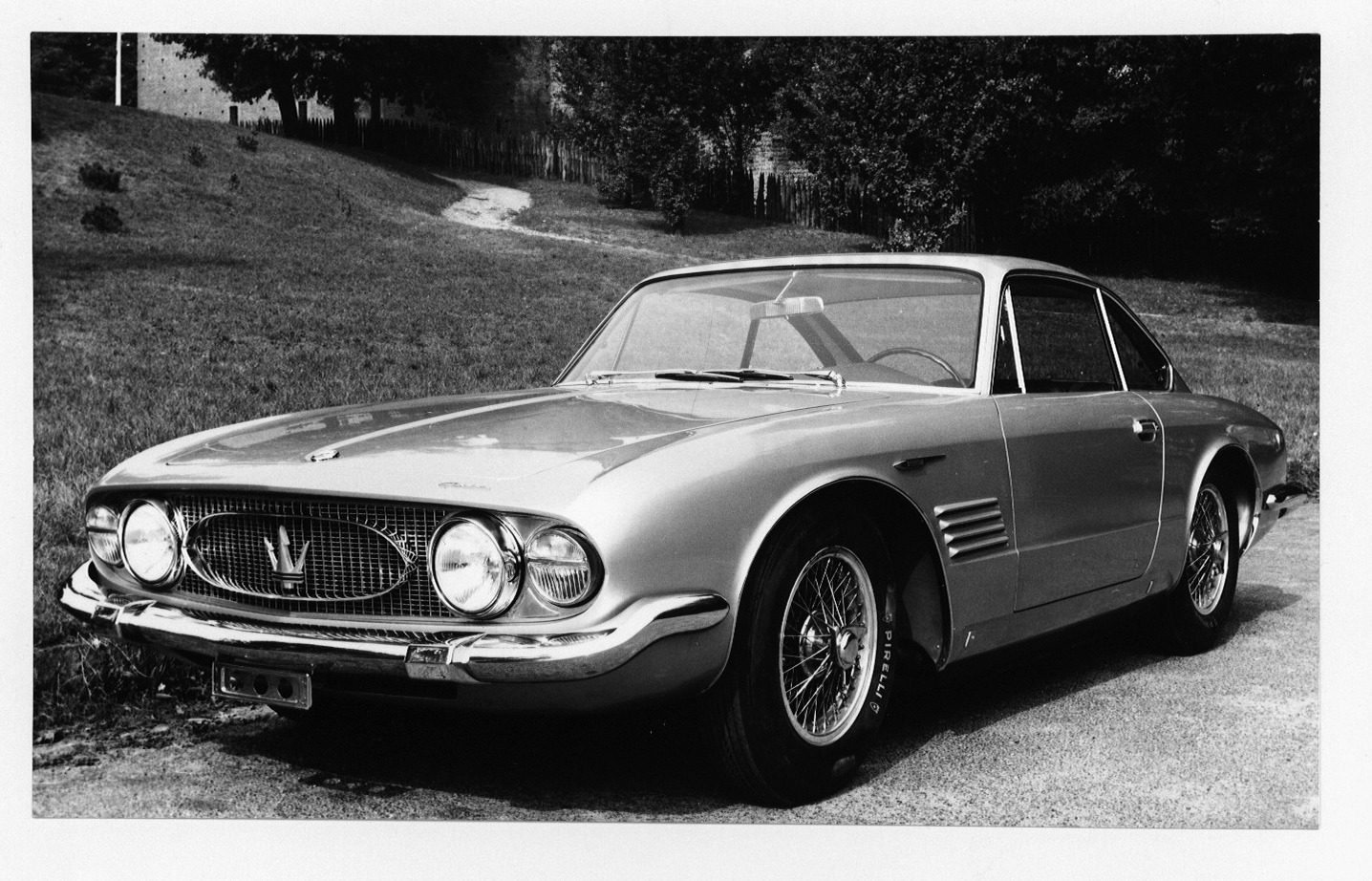
With the death of Segre in February 1963, the Ghia-Osi pact was abruptly interrupted, and Sartorelli worked for Ghia as an external collaborator. At that time, OSI mass-produced the Fiat 2300 S coupé and the Fiat “Familiare” 1300/1500.
Suddenly lacking a Centro Stile, it temporarily availed itself of the external collaboration of the stylist Michelotti. In 1965, with the arrival in Osi of Eng. Giacomo Bianco, the Osi Style Center, was born in a new building near Turin with a large warehouse equipped for the execution of prototypes next to it, complete with a small wind tunnel for small-scale models. Sergio Sartorelli was contacted as an external collaborator for the position of Head of the Styling department giving birth to the following models: Ford Mustang B1 Coupè; Alfa Romeo 2600 “De Luxe” designed by Michelotti; Alfa Romeo 2600 “Presidenziale”; Ford 20M TS Coupe and Spider. In 1966, two more large buildings were built for the series production of the Innocenti 950 Spider.
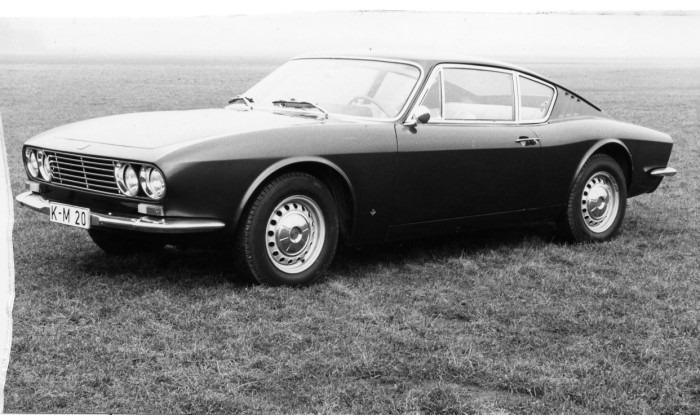
The highlight was the Ford 20M TS Coupé, mainly built for the German market with production reaching 15 cars per day. By shortening the chassis by 20 mm, Sergio Sartorelli created the 20M TS Spider version unveiled at the 1967 Turin Motor Show. The Osi Style Center had an intense production, almost aggressive, thanks to good organization and a highly skilled workforce, discipline, “Team Spirit” and, above all, great enthusiasm and cooperation for a small number of 60 employees made it possible to create the following projects designed by Sartorelli: DAF “City”; Fiat 124 “Cross Country”; Fiat 850 “Weekend”; Alfa Romeo 1600 “Scarabeo”; Bisiluro “Silver Fox”; Fiat 125 Wagon; Fiat 1200 Coupé and Spider and Autobianchi G 31 Coupé.
His work at the Fiat Style Center
The Osi Style Center suddenly ceased to exist in December 1967 after the resignation of Eng. Bianco, and Sartorelli spoke with eng. Giacosa of Fiat, many ex-OSI employees, were incorporated in 1968 into the Fiat Style Center. Sartorelli himself became the “Head of Future Studies.” In 1973, began a period that lasted 16 years which did not allow the use of creativity. This happened because of the change of production needs and the crisis of the car market. Instead of new models development, FIAT went for less expensive restyling, making the “Prototype department ” useless.
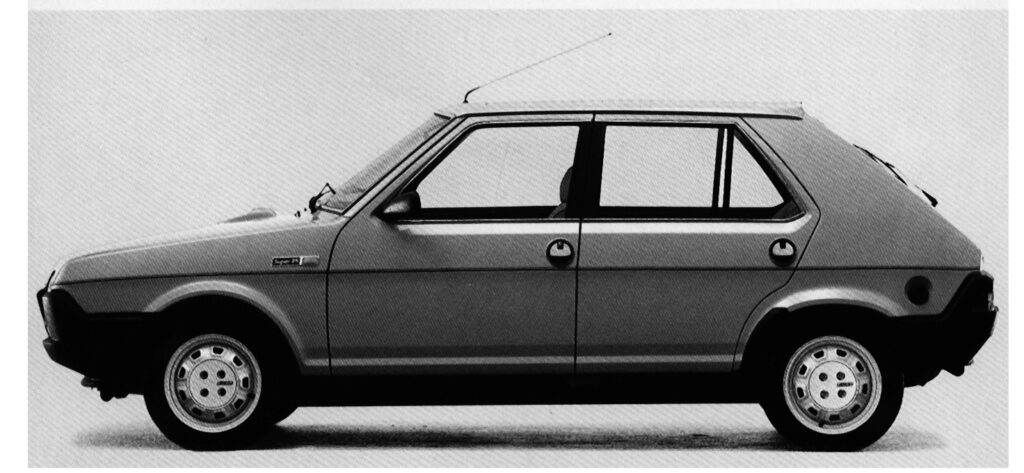
Despite those problems, Sartorelli managed to create large series production cars such as the Fiat 126, Fiat Bus 950, Fiat Ritmo, the “Lancia” Beta, “the Fiat Regata” and then the Fiat Weekend. Many more models of prototypes followed, especially by the “Tipo 3 Class” (like the Tipo) and the “Tipo 4” (“Croma”), all accompanied by an aerodynamic optimization performed at the Fiat Wind Tunnel with the Fiat Research Center in Orbassano.
The end of his career
In 1984, after 16 years in Fiat as the “Head of Future Studies,” Sartorelli officially retired, with a touch of bitterness and the feeling that the situation of those difficult years, for the car market crisis, had partially eroded, but not at all removed. In fact, in 1984, he founded “Esse Design,” a consultation company for the study and assistance in industrial design. Designer Sergio Sartorelli passed away in 2009.


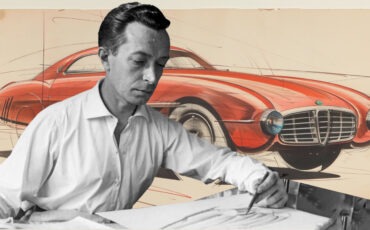










Another great story! Bravo
Molto fonti attribuiscono diversi modelli al designer Sartorelli (come la Autobianchi G31 e l’Alfa Romeo 2600, quest’ultima disegnata da Michelotti come giustamente avete sottolineato), in realtà lui ha seguito il processo produttivo / sviluppo. Ricordiamoci che Sartorelli non era SOLO designer. Come bisogno sottolineare che molti modelli attribuiti a Exner invece sono opera di Sartorelli.
Just discovered this site.
Fantastic!!
Thank you Chris and welcome 🙂
Love the american influence in Sartorelli’s designs!